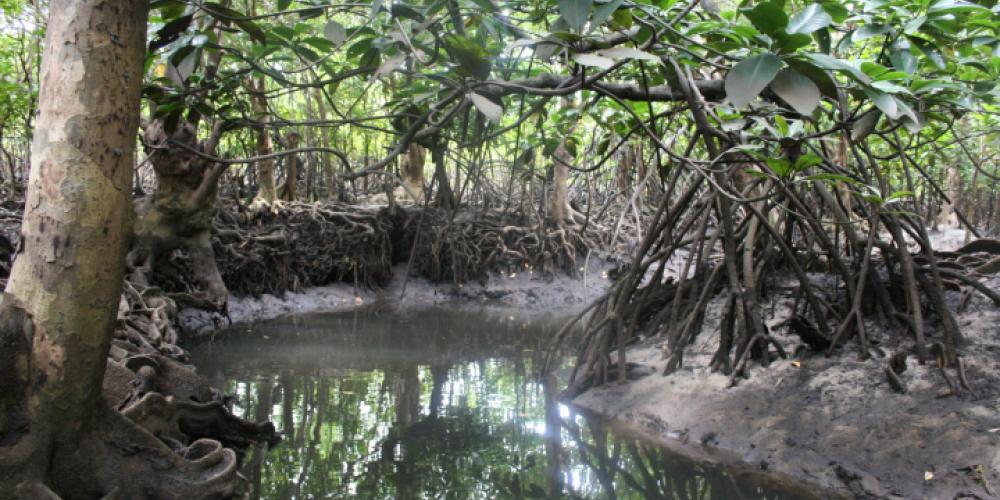
The importance of mangroves in the overall climate picture is often underestimated. But mangroves carry a considerable ecological and socio-economic importance. They protect coastal areas against erosion, provide habitat for fish and other wildlife, and store large amounts of carbon. Mangroves accumulate greater amounts of carbon per area than other terrestrial ecosystems and therefore are an important player in mitigating atmospheric greenhouse-gas emissions and climate change.
However, mangroves in many areas are threatened by deforestation, driven by land conversion (primarily agriculture and aquaculture), coastal development, as well as changes in salinity and sea level. It brings this study of mangrove dispersal and connectivity into the very current and much-needed debates on climate change.
Previous studies have focused on the climatic drivers behind the distributional changes of different mangrove species. However, in this instance, the scientists from JPL and VUB have used high-resolution numerical ocean simulations to estimate global dispersal and connectivity patterns in mangroves. They have identified important dispersal routes, barriers, stepping stones, and quantified the influence of the minimum and maximum floating periods of mangrove seeds and fruits (called ‘propagules’) on simulated connectivity patterns.
Mangroves produce propagules that are buoyant and allow for dispersal across water according to the floating periods going from days to several months. They will float for one to five weeks before developing roots for anchoring. All these properties together will determine the timescale over which viable propagules are transported to a suitable settlement. In other words, a combination of prevailing ocean currents with propagules’ floating periods will determine the spatial scale of dispersal and will control the genetic structure and global biogeography of mangrove species. [continue reading below picture]
So, what did the research team find? They found high rates of along-coast transport and transoceanic dispersal across the Atlantic, Pacific and Indian oceans. No connectivity was found between populations on either side of the American and African continents. Stepping stones were discovered in the shape of the Galapagos, Polynesia, Micronesia and Melanesia archipelagos, allowing for connectivity across the Pacific Ocean. They also demonstrate the isolation of the Hawaiian Islands and help explain the presence of mangroves on Bermuda. The minimum and maximum floating periods were found to be crucial in their influence on dispersal distance and connectivity.
As Dr Tom Van der Stocken, VUB alumnus and now researcher at the NASA Jet Propulsion Laboratory, and Prof Nico Koedam from the VUB’s Department of Biology, explain, “We anticipate that our findings will guide future research agendas to quantify bio-physical factors that determine mangrove dispersal and connectivity, including the influence of ocean surface water properties on metabolic processes and buoyancy behaviour, which may determine the potential of viably reaching a suitable habitat. Incorporating knowledge and using tools from different sciences including biology and physical geography, will lead to a better understanding of global mangrove species distributions and their response to changing climate conditions.”